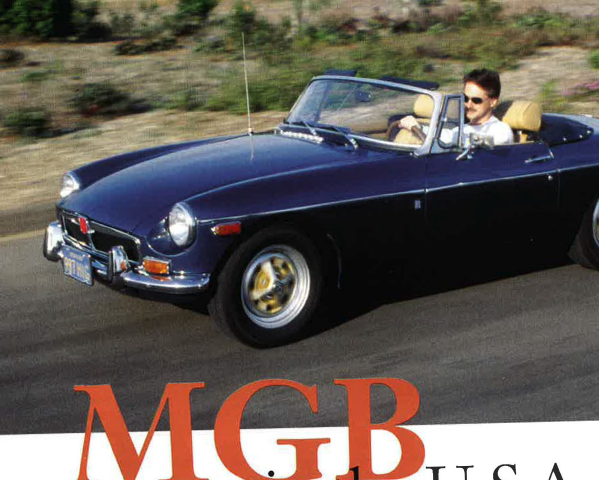By Alan Paradise
In the automotive world, there are several measuring points to determine the status of a make and model. First, there is presence, or a simple form of availability. This is pretty standard stuff—even Yugo had presence. Next there is popularity, an objective term that really means people seek or desire to buy a particular car. This is followed by enthusiastic support. At this point, there are groups of drivers that have banded together to share in the common joy of ownership. Next comes icon status, a place in history where the vehicles become familiar to nearly everyone, like a household name. The final step is legendary. This is when a vehicle has had a profound effect on the industry and a sweeping influence on vehicles that have followed. Using this as a guideline, the MGB has reached the highest status level in the automotive and cultural worlds.
From 1962 to 1980, just over 500,000 B models rolled off the assembly line in Abingdon. This makes it second only to the Miata as the most popular sports car in automotive history.
The roots of the MGB began in 1957. MG had commissioned an Italian coachbuilder to produce an advanced A, one that would incorporate many modern conveniences, such as roll-up windows and a usable trunk. After the prototype body was presented, MG was most disappointed with the results. This led to the project being turned over to Pressed Steel Company and Donald Hayter. Hayter’s prototype met with instant approval and the wheels turned quickly thereafter. In April of 1962, the first 500 MGBs left the factory to be exported to waiting American buyers.
The American market promptly fell in love with the MGB. The new refinements made the B a far more palatable road car than its A predecessor. Little things made subtle differences, such as a heater and exterior door handles. Larger advancements, such as a unitized body, demonstrated MG was moving into a more sophisticated world.
MG’s new goodwill ambassador offered modern styling, a more powerful engine, a smoother gearbox, and improved ride quality.
Although the MGB was not as quick as it appeared, the intimate styling, nimble handling, manageable power, and affordable price tag made the car a favorite among college students and young professionals. This combination sparked many rivals. Most noteworthy are the Triumph Spitfire and TR7, Fiat 124 Spider, and Datsun Fairlady/1600. In the face of these and other competitors, the MGB was the small sports car of choice. Even in an America when muscle cars were at the peak of popularity, the MGB was the best-selling sports car.
The MGB’s 18-year run came to an end in 1980. By this time, the profile had become like a guest that had stayed a bit too long at the party. The times were changing, and with it, so had the fortunes of British Leyland.
Although there were no longer new MGBs, its impact and influence became the cornerstone for the Mazda Miata. Automotive historians have taunted that, without the Miata, there would be no small sports car market in the United States. No Honda S2000, BMW Z3, Audi TT, Toyota MR2, or Porsche Boxster. None would exist without the Miata. If this were true, then the Miata would not have been born without the success of the MGB. It is this one compelling fact that places the argument for the MGB to be placed among the most important sports cars in automotive history.
Perhaps the biggest reason the B is finding favor in today’s automotive world is the accessibility of parts and the ease of restoration. A good example is Danny Cook’s 1973 roadster. For many years, the once-daily driver sat unattended as the priorities of modern family life took precedence over restoration. After years of storage, Danny sent the car south from his home in Woodland, California, to his brother, Larry, in Santee, California. What started out to be a four-month re-assembly project turned into an 18-month restoration. Larry performed all the work with the exception of body and paint. Nearly all the necessary replacement and upgraded parts came directly from the Moss mail-order catalog. The project was completed in late August, upon which Danny drove the new 1973 back home to central California.
This is just one example of why today’s MGB market has once again blossomed. Values of restored and restorable Bs are climbing. This makes restoration a bit more financially justified, as well as emotionally satisfying.
Footnote in MG History
From 1967 to 1969, MG offered the MGC roadster and MGC GT Coupe. These were short-lived and unsuccessful attempts to win back the hearts and minds of British performance lovers who longed for the return of the Austin-Healey 3000. MG replaced the inline four cylinder engines with a stout 3.0L inline six. For the heavier C, MG replaced the front coil springs with Torsion bars. The most obvious external differences between the B and C were the 15-inch factory wheels and power bulge in the hood. The American market did not take well to the C due to heavier handling and the huge bump in price ($4,000). Only 9,000 MGCs were produced, of which 4,450 were GT models, making these cars rare and wonderful jewels of the MG niche.











'MGB in the USA' has no comments
Be the first to comment this post!